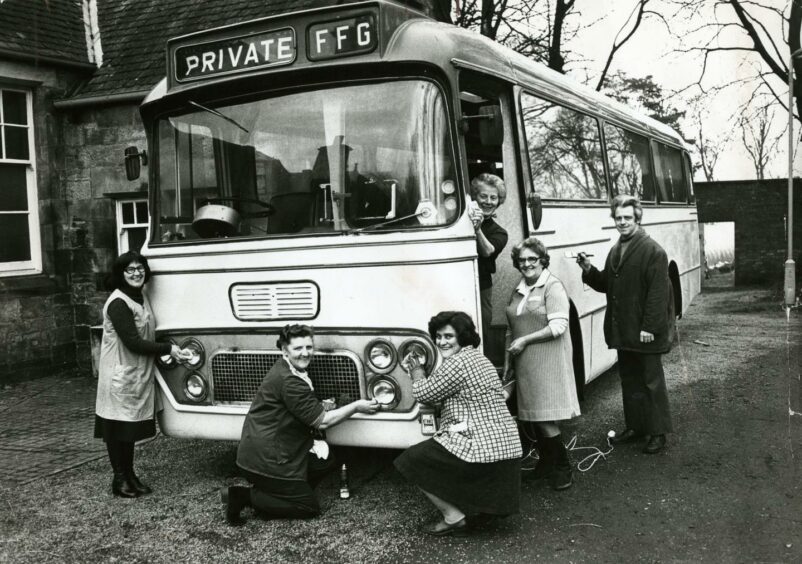In an area where bus travel made everyday life possible, it’s no surprise that Fife has seen an increase in the nostalgia people have for its old lifeline.
Fife bus enthusiasts are working hard to showcase the county’s long-standing history with this essential form of travel.
The Scottish Vintage Bus Museum, near Dunfermline, is the largest bus museum in the UK – with 180 buses on the site.
Potentially the largest bus museum in the world, its sheds are full with reminders of a bygone era.
Eddie Taylor, head guide and trustee for the museum, described what it would’ve been like as a Fife bus driver in the ’60s.
He said: “It was hard work. You had three pedals on the floor, and a manual gearbox – it wasn’t automatic, like it is now.
“You had to manually change gears at all the different bus stops. I would know – I did it!”
Fife’s buses in the 1960s were owned by “Alexanders”.
Alexanders’ Motor Services became W. Alexander & Sons Ltd in 1924.
After taking over from the trams in 1947, the Scottish bus company became the largest bus operator in Scotland and the UK before it was split up in 1961.
The company’s services operated from Glasgow and Oban in the south west, to Aberdeen and Forres in the north-east.
This huge geographical area made management difficult, and so in 1961, three separate operating units were opened in Fife, Falkirk, and Aberdeen.
The Fife branch of Alexander’s could be found in Kirkcaldy, and its once famous blue buses adopted a bright red and yellow paint job instead.
The Forth Road Bridge opened in 1964 and Alexander’s Fife began operating a service to Edinburgh.
Also at this time, manual gearboxes were replaced by semi-automatic ones.
Mr Taylor remembers that the 1960s was also a time when “one-man operation” was introduced for the first time.
He said: “There used to be a separate conductor to give you your ticket. Now, the driver does everything himself. That way of working started in the ’60s too.”
Each of the buses were also regulated so that they were all a maximum of 10m in length.
Mr Taylor added: “You don’t see that now – they’re massive!”
As part of a re-branding exercise by the Scottish Transport Group in 1978, Alexander Fife was renamed Fife Scottish.
Bus services in Britain were changed from public bodies to private companies in 1985.
As a result of the deregulation of bus services, a further reorganisation of the Scottish Bus Group occurred in 1985 and the three units became five.
This included Fife Scottish Omnibuses Ltd.
Of the five original Scottish Bus Group subsidiaries, Fife Scottish was the only company to survive the reorganisation intact.
Some Fife Scottish vehicles sported “Best Bus In The Kingdom” slogans, playing on Fife’s proud history of once being a separate kingdom.
Fife Scottish concentrated on protecting its home market, rather than trying to compete with the dominant operators in the cities of Dundee and Edinburgh.
Rennie’s of Dunfermline were the first challengers to Fife Scottish; however, the strongest competition came from local coach firm Moffat & Williamson.
Moffat & Williamson built up a substantial network of services throughout much of Fife, mirroring the larger operator’s network.
A “bus war” broke out across the region, and vehicles from both operators could be seen nose to tail on services such as that between Dundee and St Andrews.
Fife’s passenger base seemed loyal, however, and Moffat and Williamson scaled back its operations.
Fife Scottish once again reigned over transport in the kingdom – a position it still holds today.
In July 1991 Fife Scottish was purchased by Stagecoach for £9.1m.
The red and cream livery was replaced by the Stagecoach corporate look of red, blue and orange stripes on a white background.
Now part of Stagecoach East Scotland, the company trades as ‘Stagecoach in Fife’.
More like this
The wheels of change: New book looks at the glory days of Dundee buses

















